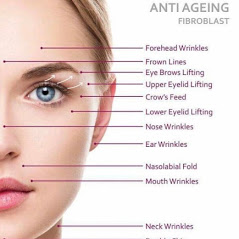
Plasma Fibroblast Skin Tightening treatments
Plasma Fibroblast Skin tightening is the latest advancement in treating loose sagging skin. It is a non-invasive procedure that can alleviate much of the botox needed and even replace fillers and save you the inconvenience and cost of a surgical facelift type procedure.
This revolutionary procedure removes the excess skin and causes instant contraction of the tissue, eliminating wrinkles and sagging. This is a major breakthrough in the beauty industry due to it’s effectiveness and low cost with immediate results. The “dots” last less than a week and you are left with beautiful tight new skin. The procedure is done with a numbing cream and with very little discomfort. It compares to a sunburn.
Plasma Fibroblasting Skin tightening
Fibroblasts are the collagen producing cells in the skin. Fibroblast treatment is performed with a device called a plasma pen, which is used to produce plasma waves. The waves are directed as tiny light spots along the wrinkle lines. The tip of the pen never touches the skin (and the needle like attachment is a sterile, disposable, one-time use product).
The pen is held above the skin and a tiny plasma arc connects the tip of the device to the surface of the skin. Using plasma waves, the old collagen is removed by sublimation (evaporation), and fibroblasts are stimulated to produce new collagen. The targeted skin contracts instantly and is essentially eliminated without any cutting, which results in the tightening and shrinking of the targeted skin.
This advanced procedure helps to revive natural levels of collagen, hyaluronic acid and fibronectin needed for fresh youthful skin. A series of tiny brown spots are strategically placed to attain the desired result. The skin around the dot tightens instantly, pulling the cells closer together.
What Does The Word “Plasma” Refer To?
The word “plasma” has two different meanings for this procedure. During Fibroblast Treatment, the pen creates an electric plasma arc. These tiny arcs of plasma are created by an electrical discharge between the tip of the pen and the skin, singeing the surface and tightening the underlying tissue. The technology involves the use of plasma, formed through the ionization of atmospheric gas, which then works to stimulate the contraction, shortening and tightening of skin fibers. This results in the reduction of the skin surface.
Plasma also refers to the colorless fluid in our blood. The liquid called plasma makes up about half of the content of blood. Plasma contains proteins that help blood to clot, transport substances through the blood, and perform other functions. Blood plasma also contains glucose and other dissolved nutrients. When isolated on its own, blood plasma is a light-yellow liquid. Along with water, plasma carries salts and enzymes. The primary purpose of plasma is to transport nutrients, hormones, and proteins to the parts of the body that need it.
Let’s talk about the importance of scabs in Fibroblast Plasma Skin tighening and lifting.
The key role in scabs are cells in the blood called platelets. When your skin is cut or scraped, you bleed. As blood is exposed to air, platelets rush to the scene and begin sticking together. They work with proteins called fibrin and other substances to form a scab, which is essentially a blood clot on the skin.
When the clot hardens, you’re left with a scab. During the healing process, connective tissue cells below the scab contract and pull the edges of the wound together, like stitches. When the wound is healed, the scab falls off to reveal healthy, repaired skin. This will help you to begin to understand why the procedure causes retraction and tightening to the area of skin we are treat.
No Over Tightening Will Occur.
The evaporated old collagen is seen as tiny brown scabs on the treated area. The tiny “micro-dot”/ brown scab is a protective crust or carbon crust on the surface and will fall off on its own in approximately 3-7 days. This could take longer in some cases and with slower healers.
This is very safe, low-risk, and highly effective treatment for skin tightening. As with most cosmetic treatments, a consultation with an experienced, trained practitioner prior to service, as well as a strict aftercare routine, is required to promote proper healing and to help you achieve the maximum results.


Plasma Skin Tightening Advantages VS Facelift Surgery
- No cutting of skin
- No stitches required
- Very low risk procedure
- Minimal side effects and far less downtime
- Quick & easy procedure
- No thinning of the skin
- No risk of blindness as there is with surgery
- No significant cost
Some of the conditions which may be treated by Plasma Fibroblast include:
- Skin imperfections
- Skin tags
- Sunspots
- Improvement in the appearance of scarring, including post-surgery scars and acne scars
- Tightening loose stomach skin after pregnancy
- Stretch Marks
- Lines and wrinkles around the mouth
- Plasma facelift
- Neck lift
- Crows Feet Lines
- Nasal Labial Folds / Laugh Lines
- Marionette Lines
- Wrinkle Removal
- Reducing excess lower eyelids and upper eyelid skin


How Long Does it Last?
As Fibroblast is more than a simple tightening treatment (skin volume is actually reduced), the effects should last as long as they would with invasive surgery. Like all surgical and cosmetic procedures, the effects of Fibroblast are not entirely permanent as it does not stop any further aging, but the positive results should last years, depending on the area treated. The positive effects of treatment will be noticeable immediately after the first treatment, but the final results will be seen after eight weeks. For some, an additional treatment may be required after eight weeks for maximum results. Additionally, there are lifestyle factors that can increase lasting results. Some of these include smoking, alcohol consumption, prolonged sun exposure, and other factors that increase skin aging.
How Many Treatments Are Required?
The number of treatments required will vary according to the area being treated, skin laxity, the desired degree of correction and the individual’s response to the treatment. Most patients see results instantly and will continue to improve over the course of the following eight weeks. Further treatments can be carried out to achieve better results. Appointments must be spaced out by 4-8 weeks.
Day of Treatment
On the treatment day, it is recommended that no make-up is worn on the treatment area. You may to take an antihistamine 30 minutes prior to your appointment to help with swelling if you are prone to swelling easily. You may continue to take antihistamines for 2-3 days following the appointment. A numbing agent is applied and left to take effect for up to 30 minutes. When the treatment area is sufficiently numb, the session begins with multiple connections of the fibroblast tip, spaced closely together. You may feel some heat in the treatment area, which may be uncomfortable and slightly irritating. Treatment time is usually between 10-40 minutes, depending on the size of the area.
Immediately after treatment the area may be red and mildly swollen with small carbon crusts (spots). Clients describe this experience as a sensation similar to a sun burn which will likely last a few hours. Swelling may intensify over the following few hours and more so when eyes are treated and may last 2-3 days. The carbon crusts will lift within 5 -12 days depending on the individual and area treated. Results gradually improve over the course of the following eight weeks.
Following the treatment, you will be provided with thorough aftercare instructions to follow to ensure you receive the best results. We will cover these aftercare instructions below and along with pre-care instructions. In the week following the treatment, or until the treatment area has fully healed, an exfoliating wash or cleanser should not be used. Instead opt for a pH balanced soap (Dove), and avoid rubbing the area.
Pre-Treatment Instructions
It is recommended that sun protection of SPF 30-50 be used daily for at least two weeks prior to the Fibroblast treatments.
Skin care products with ingredients such as retinols, alpha-hydroxy acids (AHAs), tretinoin or any type of Vitamin Aderivatives should be avoided.
Stay out of the sun, tanning salons and refrain from using any self-tanning products for three weeks.
Come to your appointment with no makeup on.


